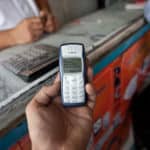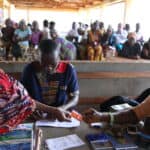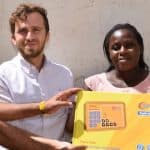Does Digital Finance Really Address Low-Income Customers’ Needs?
The numbers don’t lie: Digital finance has gained remarkable traction globally, with over 170 million active mobile money accounts in more than 90 countries. And this has translated to noticeable changes on the ground. Strolling through the markets of Kenya or Pakistan, one often hears “M-Pesa me,” or “Easypaisa kara lo! (Send me Easypaisa),” illustrating the success of digitizing person-to-person (P2P) money transfer services. Yet over the past 10 years, the digital finance community has endeavored unsuccessfully to design products, beyond money transfer and payments, that are relevant to the needs of low-income customers. As a result, usage is still infrequent.
The Mastercard Foundation Partnership for Finance in a Digital Africa (The FiDA Partnership) is keen to explore where digital finance has successfully addressed the financial needs of low-income individuals, where it is struggling to beat existing informal and formal alternatives, and what the digital finance community can do to fill these gaps. This blog post, drawing on our recent review of research in the space, will highlight some successes and struggles in digital commercial offerings over the past decade.
Digital finance tapping into payments and transfers
Beginning in 2007, P2P money transfer services and payments (such as remittances and bill payments) have found a large, hungry audience in the developing world. Digital finance offers these services in a more convenient, cost-effective, secure and transparent way than informal methods – such as sending money to rural areas via a bus. As a result – as immortalized in the famous “send money home” campaigns of M-Pesa and other providers – households are now better able to manage unexpected financial shocks and ensure smooth consumption during difficult periods.
Though the product mix has expanded significantly since 2007, less than a quarter of the 556 million globally registered mobile money accounts were used more than once a month in 2016. Usage is still low, in part because providers haven’t been able to digitally replicate relevant products for low-income populations, based on their complex financial needs and money management strategies. The generic offerings of traditional digital savings, credit and investment products often struggle to serve these multifaceted financial needs. To drive usage of digital financial services, providers need to offer superior alternatives to their customers’ existing informal strategies. In order to provide these alternatives, it’s critical for providers to understand the financial needs and patterns of low-income customers.
The Chicken and the Egg
The Kenyan Financial Diaries highlight the money management strategies of low-income Kenyans, illustrating in particular how they like to keep productive, “working” assets that, unlike a stagnant digital saving account, simultaneously provide various financial benefits and returns. These benefits and returns are usually classified into the following four universal categories, explained through the classic example of a chicken:
- Managing short-term liquidity: Eggs can be sold in the market or can simply be eaten at home.
- Accumulating lump sums of money (to invest or pay a large expense): A chicken’s value increases as it grows and can be converted to cash when needed, by selling it or its chicks.
- Dealing with unforeseen expenses: Selling eggs, chicks or the chicken itself in times of need.
- Making and receiving payments: Giving eggs to a neighbor, family or friend in order to build social capital (i.e. making them receptive to future requests for borrowing).
This one animal represents and delivers the benefits of myriad financial services, all rolled into one. It is, therefore, a much richer and more complex financial device compared with a traditional savings account. With this type of foundational understanding – researched in depth in the Kenyan Financial Diaries, Portfolios of the Poor and consumer surveys – digital finance providers can design more relevant and diverse financial products for their target customers. Other providers have illustrated the potential of this approach. For example, the microfinance industry has demonstrated that offering well-designed credit and saving products can attract clients who are looking to fulfill short-term needs and help manage their money.
The Challenge of Digitizing Social Norms
Traditional saving circles, often referred to as Rotating Saving and Credit Associations (ROSCAS), have long been a popular way for low-income individuals to save within their communities – often more popular than formal alternatives. Each member of the group regularly contributes a lump sum, with one member of the group receiving a fixed amount on a cyclical basis. Central to the functionality of such saving circles is social relationships and social pressure that encourage members to fulfill their group saving obligations.
Providers have tried to digitize these saving circles with limited success. One challenge is transferring these social commitments over a digital platform. In the Philippines, the introduction of mobile banking into group microfinance was found to break down social connections that had previously motivated members to save. This negatively affected their saving habits, with deposits declining by 20 percent over two years. At varying levels, social norms, networks and behaviours heavily influence the adoption and on-going use of digital financial services. Leveraging those norms successfully will likely remain a challenge, and a priority, for these services.
The Slow Move to Sophisticated Services
In order to put the client at the center of product design and development, some providers are employing human-centered design (HCD) research. For example, myAgro in Senegal used HCD to improve and expand its mobile layaway product for purchasing agricultural inputs.
Additionally, as more transactions are being digitized, providers are using this generated data to offer more tailored financial services to their customers. Mobile network operators have recently begun leveraging their own mobile phone records and usage data to assess their customers’ creditworthiness and to offer fast and convenient initial credit-scoring decisions and lending products. M-Shwari in Kenya, a combined savings and loan product launched in 2012, developed a client credit-scoring analysis that utilizes non-traditional data, such as how a person uses their telecom provider (SMS, calls, M-Pesa). And alternative lenders like Konfio provide micro-businesses in Mexico with working capital loans, using the data from 5,000 points (including alternative sources, such as social networks and biographical data) to assess customers’ creditworthiness.
Pay-as-you-go (PAYG) energy providers are also offering innovative financing mechanisms to help clients access energy solutions. These providers are also beginning to use some of this data to expand their product offerings. For example, M-Kopa in Kenya now offers a range of additional microcredit services, enabling clients to purchase products like televisions and cookstoves, or to get cash deposited back into their M-Pesa accounts.
Conclusion
The digital finance community has successfully addressed money transfer and payment pain points. However, as we’ve demonstrated, providers still have not been able to reliably compete with the informal money management strategies of their low-income customers, illustrated by the many benefits a chicken brings, as well as the strong pull of a ROSCA group. The advent of data, generated through mobile phones, is steadily helping providers build products around their customers’ behaviors, exemplified by M-Kopa in Kenya and PAYG energy providers. These tailored, niche products have the potential to reduce the gap between adoption and usage of digital finance products and thus meet the financial needs of low-income customers.
With the innovation taking place, the FiDA Partnership will explore whether sophisticated products will introduce any consumer risks or unintended consequences. These can range from adverse credit terms buried in digital contracts that low-income customers may not understand, to products that potentially widen digital and financial literacy gaps – and even to the utilization of money transfer services for risky and often harmful activities such as gambling. Nonetheless, the appropriate use of data and the application of culturally appropriate conversational interfaces – combined with consumer protection regulation and education campaigns – can counterbalance and address these sorts of unintended or adverse consequences. We are hopeful and excited about the future of digital finance, and we invite you to watch our space and join the conversation.
Maha Khan is the Senior Manager, Research and Knowledge Management at Caribou Digital, working with the Mastercard Foundation Partnership for Finance in a Digital Africa.
Annabel Schiff is a senior manager in market intelligence at Caribou Digital, which provides investment advisory, strategy advisory and research services to for-profit and nonprofit organizations focused on building inclusive digital economies in developing markets.
Photos of the ComAct program Village Savings and Loan Association meetings in Southern Malawi by IM Swedish Development Partner via Flickr. Providers have tried to digitize these saving circles with limited success.
- Categories
- Finance, Impact Assessment



